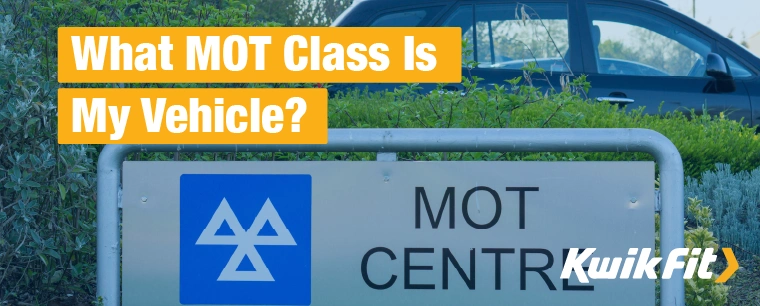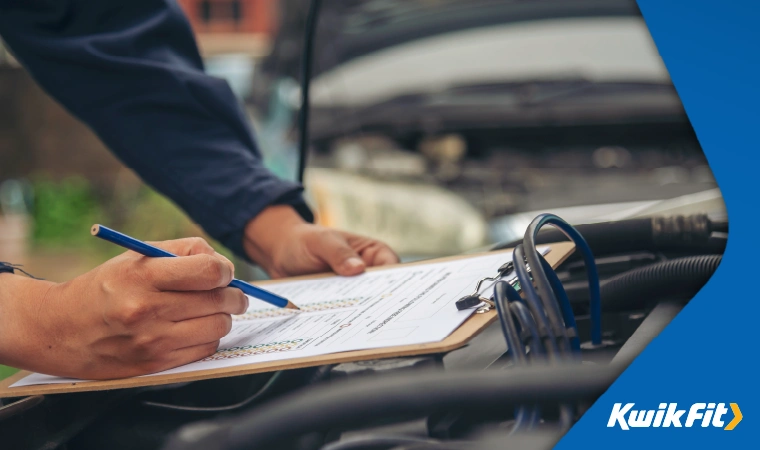What MOT Class Is My Vehicle? Learn More Here
Jack Dreyer | Wednesday 3rd January 2024 12:00pm

If your MOT is due, it helps to know what MOT Class your vehicle should be in!
When it comes to MOTs, every vehicle on British roads is categorised into one of six MOT classes Ė which are designed to help MOT test centres apply the right checks to the right vehicles. After all, a moped has different mechanical requirements and is used in different ways than a commercial van, right?
If your vehicleís just turned three (happy birthday) and you need to take it for an MOT check, you may be wondering what MOT class it is. Read on to find out.
Whatís the point of MOT tests?
In short, MOT (Ministry of Transport) Tests exist to certify that every car on the road meets the minimum safety requirements set out by the government. The aim here isnít to catch you out in order to make money, but in order to keep everyone safe.
As a result, MOT test results donít always flag mechanical problems that would otherwise be flagged in a full service, because the test doesnít analyse the overall condition of the car - but instead inspects the safety-critical elements. If your engine stops working, for example, you can usually stop and pull over somewhat safely. But if your brakes suddenly stop working, youíre in trouble.
What are the different MOT classes?
These MOT categories arenít named very imaginatively, but this system at least keeps things simple. Here are the MOT categories:
Class 1
This class is primarily for small motorbikes that are up to 200 cc, or for motorbikes with sidecars up to 200cc. Essentially, this just means low-power motorbikes for one or two riders. .
Class 2
Class 2 includes any kind of motorbikes (with or without sidecars) that are over 200cc. These higher-power motorbikes will tend to be larger and have more components to handle the extra power output of the engine.
Class 3
For unique 3-wheeled vehicles that weigh up to 450kg, youíre looking at a Class 3 MOT.
Class 4
Class 4 is the most common category as it includes most road vehicles:
- Cars (with up to eight passenger seats)
- 3-wheeled vehicles over 450kg
- Motor caravans (a.k.a, campers, RVs, or motorhomes)
- Service vehicles such as ambulances and taxis
- Private passenger vehicles (up to 12 passenger seats)
- Goods and services vehicles with a gross weight of up to 3,000kg
Class 5
Class 5 contains more sophisticated vehicles on a larger scale:
- Private passenger vehicles and ambulances (13-16 passenger seats)
- Private passenger vehicles and ambulances (over 16 passenger seats)
- Playbuses
- Coaches
Class 4 vehicles with 9-12 passenger seats and Class 5 vehicles with over 13 passenger seats which also require a seatbelt check are classed as a Class 4a or Class 5a, respectively.
Class 7
Class 7 MOTs are for goods and services vehicles with a gross weight of between 3,001kg and 3,500kg.
If youíre looking to find centres near you for a Class 7 MOT check, check out our Class 7 listing for Kwik Fit garages that are able to accommodate larger vehicles. Itís worth being aware, though, that there tend to be fewer auto centres around the country that can accommodate Class 7 MOTs simply due to the size.

The Annual Test
For vehicles over 3,500kg (thatís 3.5 tons), thereís a separate test known as the Annual Test. A test on these vehicles needs to be conducted by an Authorised Test Facility (ATF) or at the DVSA test station. Due to the larger size, the annual test cannot be done at most local repair centres.
Does my vehicle need an MOT?
Your vehicle most likely does. If your vehicle is three years or older, or is an ambulance, taxi, minibus, or playbus over one year old, then youíre legally required to put it through an MOT test once a year. This is in order to check that all vehicles on the road meet a minimum safety level.
Is My Van Class 4 or 7?
These classifications differ by gross weight, otherwise known as the maximum laden weight (the total weight the chassis can hold). This is also known as the MAM (maximum authorised mass) or GVW (Gross Vehicle Weight).
A Class 7 van is unlikely to weigh 3.5 tons, but its chassis is usually designed to be able to carry up to 3.5 tons (including the van itself). Usually, youíll be able to find this information in your vehicleís manual or often on a sticker by the driverís doo
Book an MOT check
If your vehicle has an upcoming MOT test, get reliable help and testing at your local Kwik Fit centre. Simply call us today to book an appointment, or browse our MOT information pages for more information.
Any facts, figures and prices shown in our blog articles are correct at time of publication.
Featured Articles
Is it Illegal to Drive With One Headlight?
Saturday 19th July 2025
Wondering if itís illegal to drive with one headlight? Learn about the safety risks and penalties of illegal blown bulbs and why you should fix them promptly.
Air Con in EVs & Hybrids: Experts Answer Your Questions
Monday 30th June 2025
Does air con drain EV batteries? Can you use the air con while charging an electric car? Find out the answers to these questions & more from Kwik Fitís experts.
Why Is Your Car Making a Noise? Fixes & Tips
Friday 13th June 2025
When your car starts making unexpected noises, it can certainly be quite disconcerting; it may be nothing to worry about, but hereís what you need to know.









